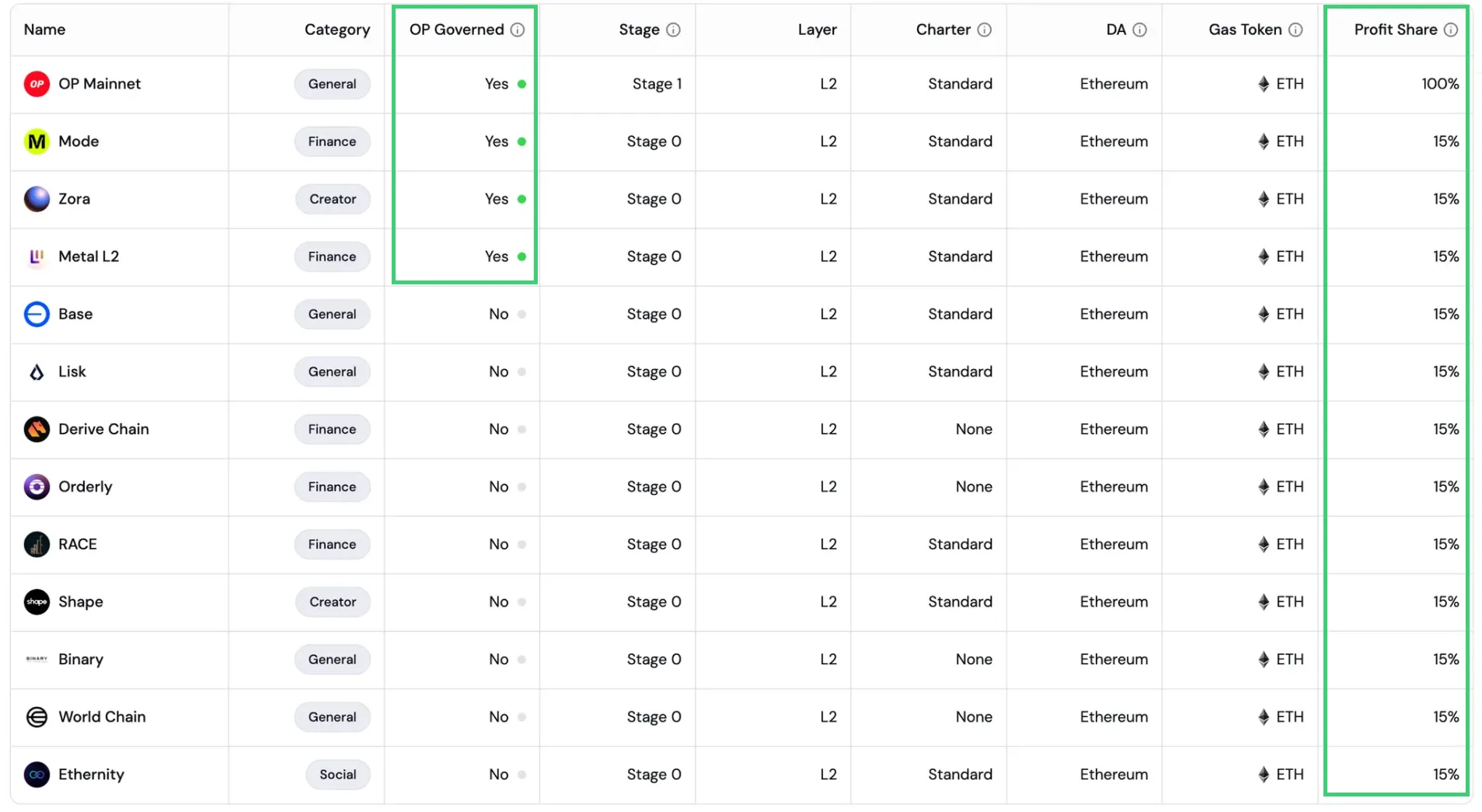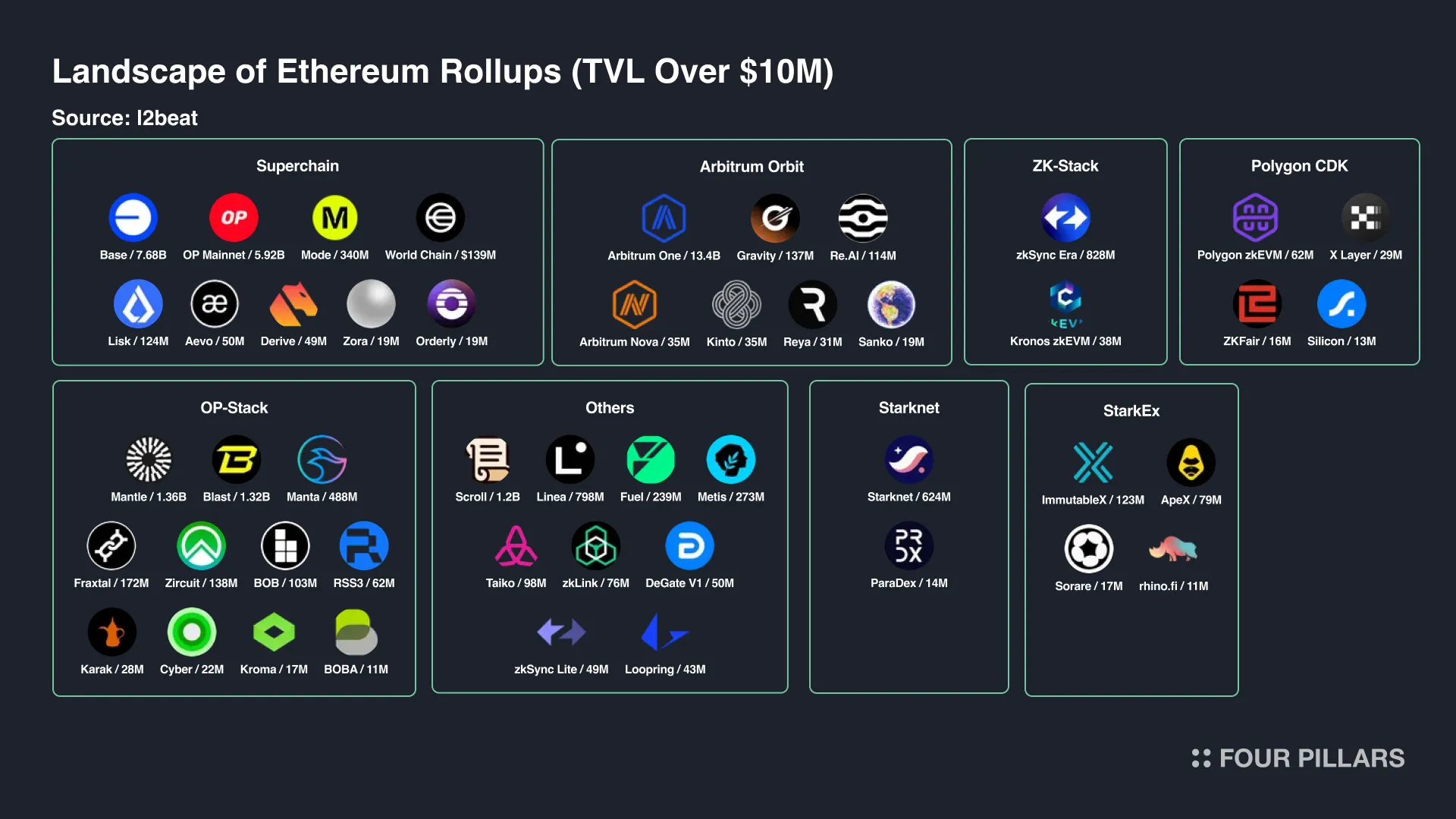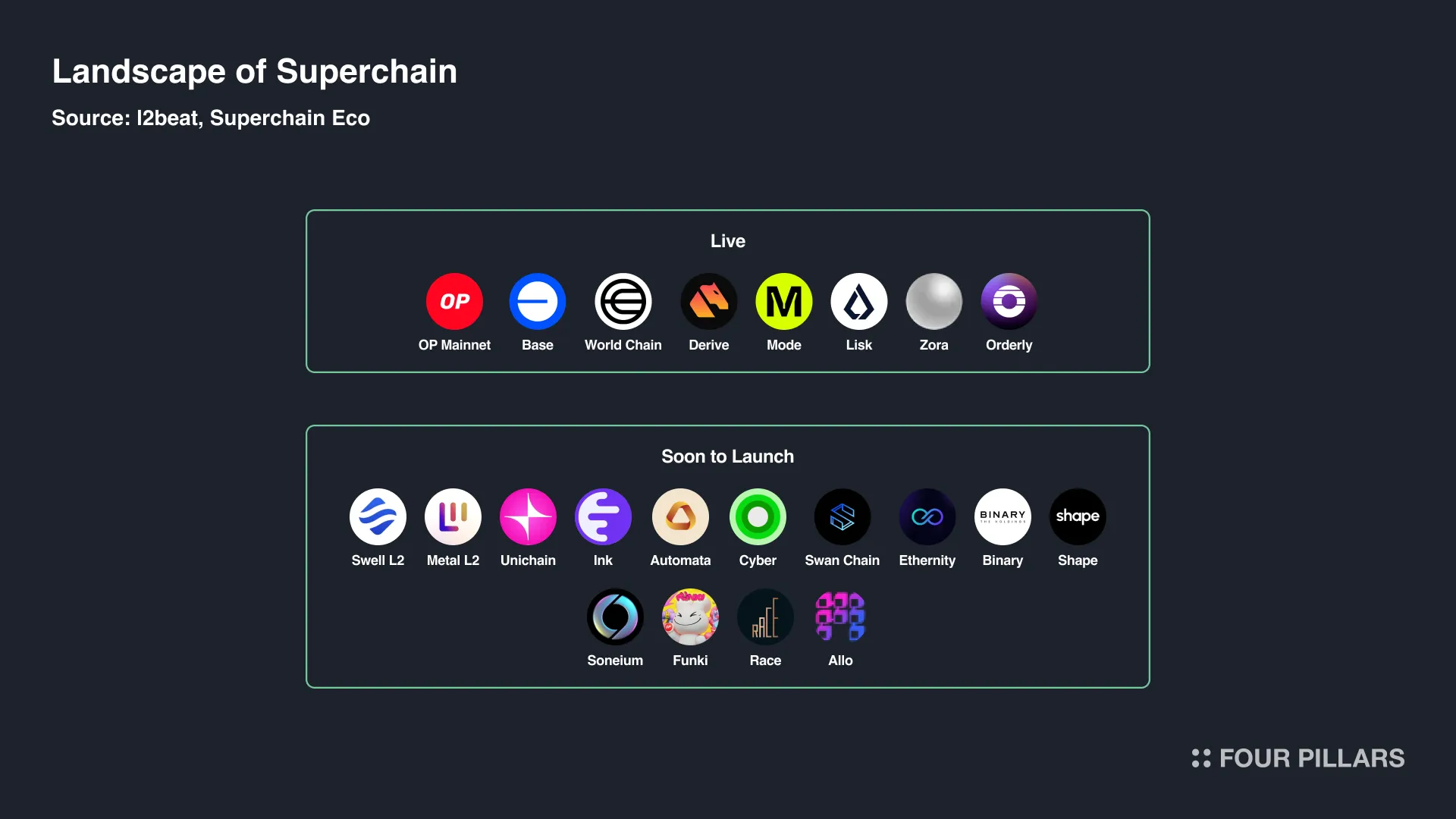196 - This is the current number of rollups in the Ethereum ecosystem. About 100 are now live on mainnet, with others set to launch soon.
More projects are likely to launch their own rollups in the upcoming year, as operating costs decrease and RaaS providers like Conduit and Caldera offer better services and integrations.
However, despite lower costs, the integration expenses and overhead for operating a rollup remain high, compared to operating a dapp. Rollups without sufficient transactions and value capture - essentially those that are just another general-purpose rollup - will likely fail. PGN was one of the first rollups to cease operations due to high costs.
On the bright side, Superchain, a collective of rollups built with OP-Stack, is driving adoption. Recently, DeFi protocols like Swell and Uniswap, along with enterprises like Kraken and Sony, announced their rollups.
Superchain is leading the charge in making the fragmented rollup ecosystem more cohesive. Will this trend continue? There are also some hurdles and pitfalls to avoid, and lessons to learn from the experiences of Cosmos Hub and Cosmos-SDK.
The Optimism Superchain ecosystem has recently welcomed several OP-Stack based rollups, each bringing unique focus areas. These additions contribute to the diversity of the Superchain ecosystem.

Some examples include:
Swell L2: This L2 aims to be a hub for "Swell Assets" (swETH, rswETH, swBTC, etc.) using its unique Proof of Restaking (PoR). Swell L2 builds its ecosystem and tackles common L2 issues by integrating multiple AVS protocols, including EigenDA and AltLayer's Restaked Rollup Infrastructure.
Unichain: Developed by Uniswap Labs on OP-Stack, Unichain features rapid block building using Flashbots' Rollup-Boost. It also aims to enhance cross-chain liquidity and user experiences. As the first OP Stack L2 with 1-second block times, Unichain is working to reduce confirmation times to 250 milliseconds using TEE-based block builders.
Ink: Announced by Kraken, one of the largest CEX, Ink is also built on OP Stack and plans to join the Superchain ecosystem. Its primary goal is to offer a seamless bridge to DeFi.
The Superchain, a collective of OP Stack-based rollups, is achieving alignment across various aspects. This alignment is evident in several key areas:
Tech Stack Alignment: The OP Stack serves as the foundation for the Superchain, providing a unified tech framework. Also, a native protocol layer for interoperability is being developed, as outlined in the OP Labs blog. This will enable seamless asset and data movement across the Superchain without relying on other 3rd party infra.
Economic Alignment: A profit-sharing model has been implemented, with approximately 15% of fees generated by participating rollups being sent to the OP treasury. This creates a shared economic incentive and helps fund further development of the ecosystem.
Governance Alignment: Four rollups within the Superchain are now OP-governed, indicating a move towards a more unified decision-making process and shared governance structure.
These alignments are crucial for creating a more integrated and efficient Superchain ecosystem. By sharing tech, governance, and economic incentives, the Superchain aims to provide a seamless experience for users and developers while leveraging the collective strengths of its participating rollups.

Source: Superchain Registry | Superchain Eco

Source: L2BEAT - The State of the L2 Ecosystem
Other Top Player:
Arbitrum Orbit: Arbitrum Orbit with OP-Stack, is leading the rollup ecosystem. It's successfully attracting a diverse projects across various sectors including gaming, derivatives, and NFTs. Arbitrum Orbit's appeal lies in its contnuous improvements that offer low-cost transactions, high throughput, and customizable features.
Gaining Momentum
zkSync: zkSync presents an interesting case. While its mainnet isn't gaining significant momentum, the collective of ZK-Stack based rollups, known as Hyperchain, is bringing promising projects to the ecosystem. Notable among these are Abstract L2 by Luca Netz and Treasure Chain L2, a popular gaming project that migrated from Arbitrum.
Two framework is losing the momentum:
Polygon zkEVM: Polygon zkEVM, once considered a promising contender, is struggling to attract teams and mindshare. While there's potential for AggLayer, Polygon's interoperability and liquidity infrastructure, to drive adoption, it remains uncertain which rollups will utilize this tech. The emergence of X Layer, an L2 by OKX, shows promise, but its impact is yet to be determined.
StarkEx: StarkEx is facing challenges in gaining traction. The Cairo VM, while innovative, has proven to be a significant hurdle for developers. Although projects like Kakarot are working on bringing an EVM to CairoVM, the ecosystem is losing mindshare and attention from the broader blockchain community.
Contender
Taiko BBR: Based Booster Rollup (BBR) is a scaling solution that combines the benefits of based rollups with additional scaling capabilities. BBRs aim to provide native Ethereum scaling by allowing L1 validators to propose blocks for the entire boosted network. However, how it would be implemented is yet to be seen.
As rollup frameworks mature, they are developing distinct advantages. For example, Hyperchain offers improved interoperability through zero-knowledge proofs, while Arbitrum Orbit provides various enhancements like faster withdrawals. Each framework and ecosystem will become specialized. However, if development stagnates, the ecosystem may shrink—as seen with StarkEx.
Having multiple general-purpose rollups weren’t diversify the ecosystem. Instead, each L2s should have a unique role to avoid competing for the same dapps. Here's how they can differentiate:
OP-Mainnet: Hub for experiments and new dapps
Swell L2 PoR: Restaking hub for AVS and diverse assets
Unichain: Liquidity hub
Base: Consumer-focused general-purpose platform
World Chain: Identity-focused chain
Zora: NFT and social-based platform
Ink: Bridge for onboarding CEX users to DeFi
By complementing each other, the ecosystem will become more robust.

Source: OP-Stack: Most Simple Framework to Build Your Blockchain | Four Pillars
Cosmos Hub - the first blockchain built with Cosmos-SDK - is now just hold a symbolic representation of the ecosystem. It offers limited functionality, mainly ICS is the utility, but has been slow in adoption. Also, the leadership is fragmented.
For OP-Stack to flourish, its ecosystem must become an innovation powerhouse. While the growth of other OP-Stack general rollups like Base is encouraging - now leading in TVL - this expansion poses a challenge. As these rollups grow, they might lose motivation to contribute to the OP Treasury.
Consider this scenario: If Unichain, Ink, and Base reach $10B TVL while OP-Mainnet stays at $500M, will they still support the OP Treasury? More likely, talent and development will scatter, resulting in a loss of leadership.
To sustain momentum, OP Labs and OP-Mainnet must become the focal points for innovations, initiatives, and talent.
Related Articles, News, Tweets etc. :
Dive into 'Narratives' that will be important in the next year